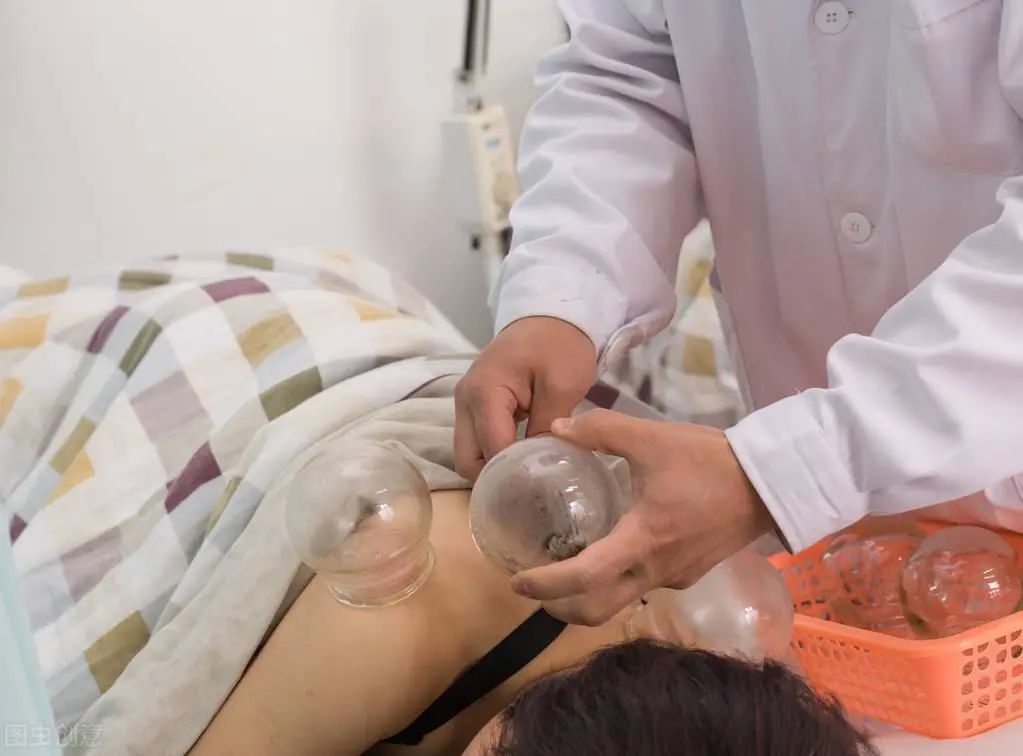Cupping therapy is a popular health maintenance method today. In recent years, many well-known athletes abroad have become fascinated with this “mysterious Eastern power.” Cupping can eliminate cold and dampness, unblock meridians, disperse blood stasis, promote qi and blood circulation, reduce swelling and pain, and expel toxins and heat. It plays a role in adjusting the balance of yin and yang in the body, relieving fatigue, and enhancing physical fitness, thereby achieving the goal of strengthening the body and expelling pathogens to cure diseases. Therefore, many ailments can be treated with cupping therapy.
After cupping, our back often shows marks that are red or purple, varying in depth and shade. Do you know what these different colors of cupping marks indicate about our health?

Hello everyone, I am Dr. Li. In clinical practice, we use different cupping techniques based on various conditions. We often select different meridian acupoints for treatment according to symptoms. Common cupping methods include flash cupping, sliding cupping, and retained cupping. Thanks to the simplicity and effectiveness of cupping, many beauty salons, health therapy centers, bathing establishments, and even residents at home can perform cupping therapy. After cupping, the body often shows marks of different shapes, colors, and depths, and some areas may even have petechiae or blisters. So what do these cupping marks reflect about the body’s health? Today, Dr. Li will explain it to you in detail:

- Pink or no significant cupping marks, with no bruising on the skin, or slight redness that quickly disappears and returns to the original skin color—generally indicates no disease or mild condition, considered a normal cupping mark.
- Purple-black and dark—generally indicates insufficient blood supply and poor circulation, often a sign of qi stagnation and blood stasis.
- Purple with spots—generally indicates cold congealing and blood stasis; if the cupping area is purple-black, it often indicates fire toxicity; if purple with spots, it generally indicates cold congealing and blood stasis; the degree of purple indicates the severity of the condition.
- Scattered purple spots with varying depths—generally indicates qi stagnation and blood stasis.
- Bright red marks—generally indicate yin deficiency, qi and blood deficiency, or yin deficiency with excess fire.
- Dark red marks—generally indicate possible high blood lipids, high blood viscosity, and heat evil.
- If the skin at the cupping site is white, feels cold, and has white blisters—generally indicates significant wind and dampness. If the skin is white without other phenomena, it often indicates anemia, deficiency cold, and damp evil; if the skin is white and cold without blisters, it generally indicates significant wind-cold; if white blisters contain white foam and there is itching during cupping—generally indicates expelling wind-cold and wind-damp; if the cupping marks are gray-white and feel cold—generally indicates deficiency cold and warm evil.
- Skin texture or slight itching on the cupping marks—indicates wind evil and dampness.
- If there is moisture on the inner wall of the cup—indicates dampness in that area.
- If blisters appear on the cupping marks—indicates significant internal dampness; if the blisters contain blood—indicates heat and damp toxicity; if yellow blisters or yellow-green blisters with pus and viscous substances appear—generally indicates inflammation and is relatively severe.
- If the cupping area feels painful—indicates internal fire toxicity; if the cupping site feels painful first and then itchy—indicates first expelling fire toxicity, then expelling wind-cold and dampness.
- If the color of the cupping marks gradually lightens or decreases during continuous cupping—indicates that the condition is gradually improving or nearing recovery.
- Blood drawn from cupping can reflect different conditions. Generally, fresh blood indicates a milder condition, black or bruised blood indicates significant stasis, yellow fluid indicates damp-heat syndrome, and clear fluid indicates cold-damp syndrome.
Note: Some text and image resources in this article are sourced from the internet. The purpose of reproducing this article is to convey more information. If there are any errors in source attribution or infringement of your legal rights, please immediately leave a message in the background to notify us. If the situation is true, we will delete it as soon as possible and apologize to you.
More exciting content:
1. What to do about dizziness and insufficient blood supply to the brain? Four small methods for effective adjustment.
2. Is tinnitus just kidney deficiency? Three small methods to help you distinguish between deficiency and excess, and adjust correctly.
3. Could headaches be caused by blood stasis? The “cleaners” in the blood help you improve headache issues.
Light it up, you look the best!

